On our second morning in the Serengeti, the green FJ45 wouldn’t start. I wasn’t really surprised. We’d been forced at the last minute to hire the oldest, rattiest vehicles I’d ever seen for this safari, because our regular supplier had run into some, shall we say, bureaucratic issues. Now I was faced with six caffeined-up clients ready to head out to find lions.
So far they were being patient, but this was the Serengeti—things could turn predatory without warning.
I got out the single rusty toolbox that had come with the three vehicles—and groaned when I opened it. The few items inside were rustier than the outside. Pliers, an adjustable wrench, screwdrivers that had clearly doubled as cold chisels at some point. Sighing, I got to work. Crank but no fire, check. Ground a spark plug—nothing. I removed the distributor cap, and found that the points had migrated to fully open. A quick re-gapping—by eye—and tightening (with my Leatherman)—and the old girl rattled back to life. Fortunately a simple fix, but I resolved never to rent vehicles again without bringing my own tools.
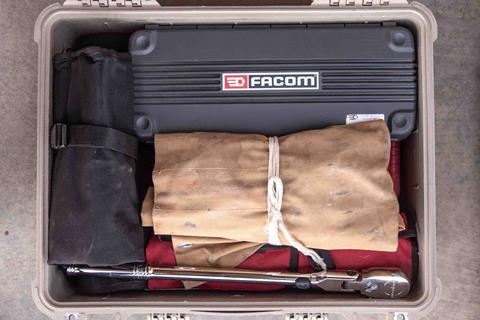
Your vehicle is probably in much better shape than that Land Cruiser—but no vehicle is infallible. And while such things as modern fuel injection systems are essentially non-field-serviceable, there are plenty of potential issues that can be fixed in the field with a proper tool kit.
Zero mechanical aptitude, you protest? Two answers: 1) You might be surprised at what you can figure out if the alternative is a long walk out, and 2) If you need to rely on a Good Samaritan passerby, it’s much more polite to contribute your own tools to the effort. Besides, there are always things to be tightened or adjusted on any long journey.
The Tools
How many tools to carry depends somewhat on the length of the journey and its remoteness, but let’s look at a selection that should handle most trips short of a major expedition.
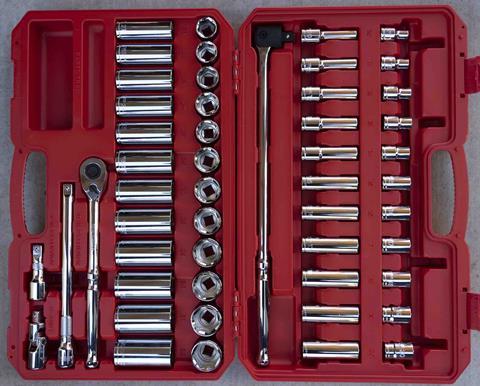
My first axiom is: If you’ve brought out the tools, something has already gone wrong. Why risk compounding the problem by tackling it with cheap tools that might break? You can eliminate that risk by handing a Snap-on rep your Platinum Amex, but the resulting minimum monthly payment might rival your mortgage. Instead, prioritize the most important tools and, if necessary, economize on the rest.
Sockets & Ratches
By far the most quality-critical component of your tool kit is a ratchet and socket set, particularly a larger, 1/2-inch set. This is what you’ll need for any major work, and there is no substitute for excellence here: If your cheap 21mm socket splits removing a transmission or suspension bolt, or your cheap ratchet spits its teeth, you won’t get that fastener off with your multitool.
So if you’re going to splurge on something from the big white and red truck, this is the one to get. (Hint: check eBay and Craigslist for used.) Other high-quality sets come from Facom and Tekton.
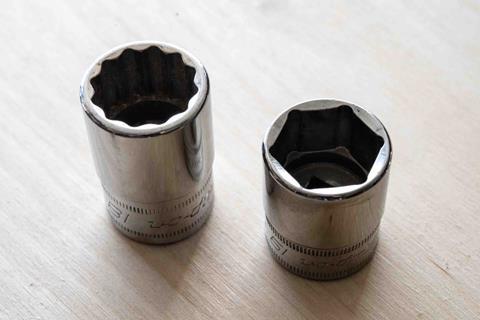
I recommend a set with sockets from around 12mm up to at least 24mm (or the SAE equivalent), and preferably up to 32mm. Make sure the socket teeth display the rounded design pioneered by Snap-on’s “Flank Drive” system (now widely copied), which bear on the flats of fasteners rather than the corners. Look for a fine-tooth ratchet, at least 72 to 80 teeth (count the number of clicks to make one complete revolution to determine this if not specified).
A fine-tooth ratchet means a shorter swing of the handle to engage the next tooth, very handy in confined spaces. I also recommend an auxiliary 18-inch breaker bar for large/stubborn fasteners. I splurged on a Snap-on SX80A flex-head ratchet for this and have never regretted it, but an inexpensive non-ratcheting bar works fine.
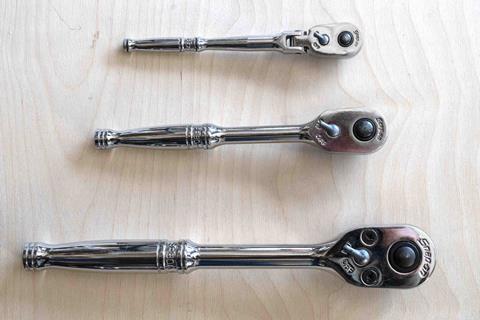
Another highly recommended option here is a torque wrench, which can be used to properly tighten wheel nuts (do you do that now?) on up to major engine work.
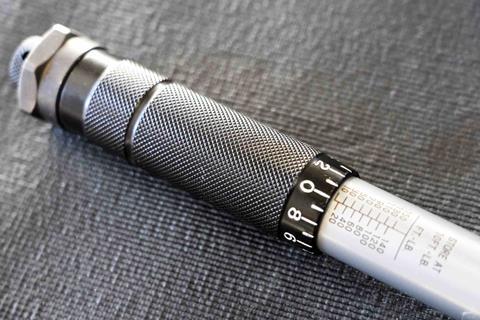
You’ll also want a smaller 3/8ths or 1/4-inch ratchet/socket set; in this one look for sockets from around 6mm up to perhaps 17mm (some overlap here with your 1/2-inch set is good for redundancy). Some sets will include a bonus selection of hex and Torx fasteners—good to have (otherwise, buy a separate set of them).
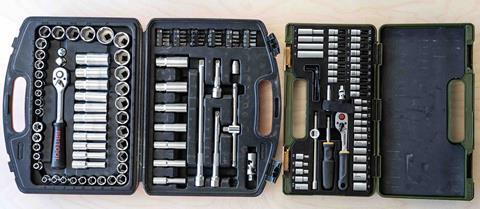
I prefer ratchet/socket sets that come in a compartmented blow-molded case. Why? Easy organization and retrieval, for one thing. Also, I’m notorious for losing tools in the field; the case makes it easy to check for missing pieces.
Wrenches
Next: wrenches. You can economize here; I’ve broken plenty of cheap sockets and ratchets but never a decent wrench (still, better wrenches will fit fasteners more precisely). You can save money and weight by buying wrenches with a different size on each end—13/14mm, 17/19mm, etc.—but combination wrenches with one open and one box end, in discrete sizes, are much more versatile. I carry sizes from 5mm to 24mm. And—true confession—I do carry a small adjustable wrench, just in case.
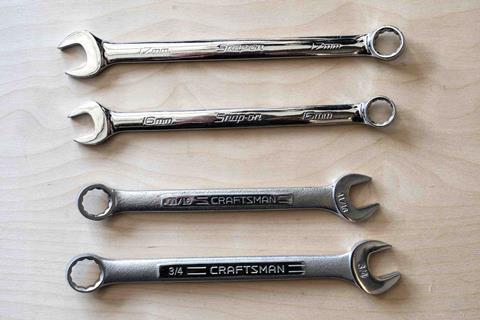
Wrenches and sockets won’t undo everything, so you’ll need pliers as well. I carry a couple sizes of slip-joint pliers—Channel-Lock is a good brand; the German Knipex are the best. Also needle-nosed pliers, at least one vice-grip-type plier, and a heavy-duty side cutter. Finally, I include two or three hemostats for precision work.
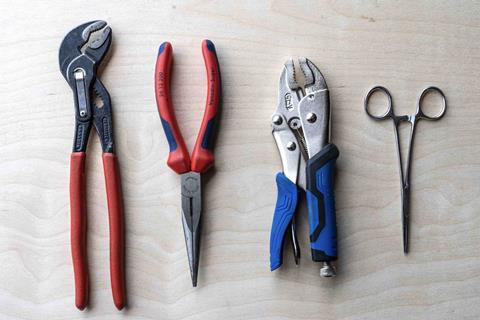
Drivers & The Rest
You’ll want a selection of standard and Phillips screwdrivers, of course, including stubbies. Honestly, hardware-store versions work just fine. However, if you want to step up, look at the Shock Impact screwdrivers from Facom, which have a striking surface on the back of the handle. A sharp rap with a hammer with the tip against an otherwise stuck screw will frequently loosen it. I also have a ratcheting screwdriver with interchangeable tips; the nicest one I’ve used is from Wera.
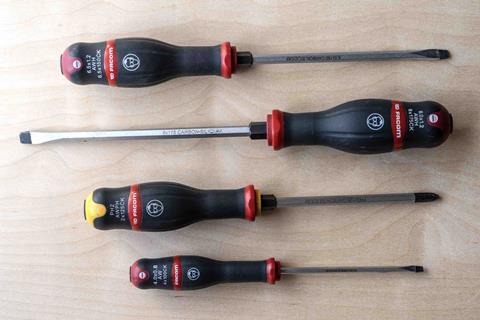
I carry two hammers: a 16-ounce ball-peen for light work, and a 21-ounce shop hammer from the bicycle-tool company Park Tools, with one steel and one plastic face. To hit with the hammers: two cold chisels, two punches, and a brass drift for knocking out or installing things you don’t want to scratch, like bearings.
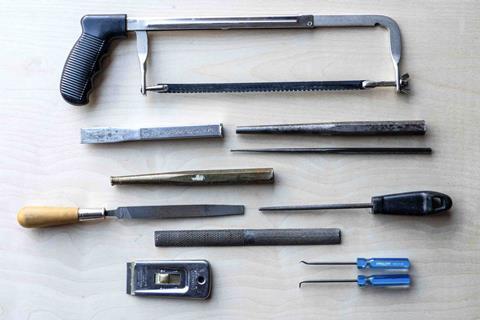
A tool you won’t need often, but which is fiendishly difficult to make do without, is a convertible snap-ring plier with several tips. Trust me on that one.

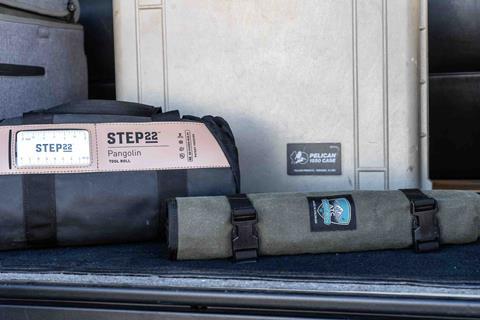
Everything I’ve listed here will fit in a Pelican 1550 case, which is easy to strap down safely. Look at the tool rolls and pouches from Step 22 Gear and ATC (Adventure Tool Company) for individual organization. Put it all together and you’ll be in good shape to manage a fleet of dodgy old Land Cruisers in the Serengeti.
Don’t Forget These Tools
These items may seem inconsequential, but you’ll find that they are important when you realize you need them.
- Hacksaw and spare blades
- Flat and half-round files
- Round file (many, many uses)
- Small pry bar
- Electrical stripping/crimping tool (a full electrical kit comprises its own article)
- Box cutter with several spare blades
- Utility pick set for removing O-rings, etc.
- Gasket scraper
- Feeler gauges
- Wire brush
- Radiator hose pick (many other uses)
- Good safety glasses


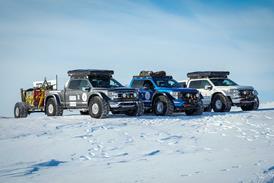

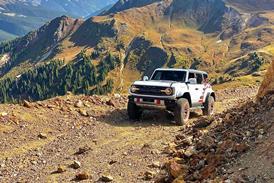

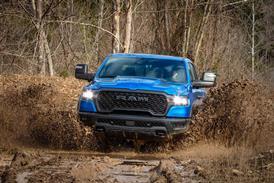
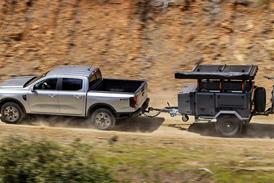



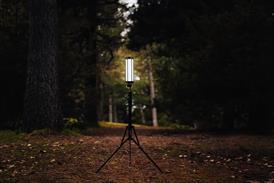
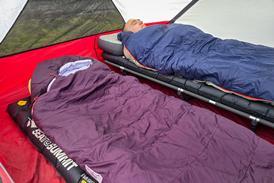








No comments yet